Here’s a little secret: it’s entirely possible to rank all the
great content you’ve been creating with stepwise content optimization.
Want to know another secret about how the pros optimize their content to rank better?
They don’t focus on SEO alone. Instead, they focus on readers and their experience with their content (technically known as content experience). And, that’s what you should aim for too.
Meaning: optimize your content keeping your readers in mind first, the search engines second. The goal? To provide visitors the most value – as quickly as possible – when they read your content.
Wondering why?
Because, ultimately, when site visitors find your content valuable, they spend more time on your page. This increases the page’s dwell time while reducing the bounce rate. Both of these metrics help your SEO ranking.
That said, let’s not forget your content needs to send some rank-worthy signals to the search engine too.
So, let’s look at how you can optimize content to send these signals and please your readers in 12 simple steps.
But First, Create a Content Optimization List in Your Workflow
Using Task Templates in CoSchedule Marketing Calendar,
create a templated list of the 12 steps outlined below.

Apply the task template to all content pieces – you have the choice to apply the checklist before publishing and post-publishing (best if you’ve only started looking at content optimization)

Working on website content optimization with the rest of the team? Assign tasks from the checklist template to different teammates alongside due dates.

Create your free account to start creating task-based checklists with Marketing Calendar Free. Then when you’re ready to upgrade, enjoy Task Templates with Marketing Calendar Pro.
Your 12-point Content Optimization Checklist
Now, for the meat of the matter:
1. Content is Easy to Read
Content that’s easy to read is content that’s simple to understand, therefore providing more value to readers.
Think of it like this: would you read a text-heavy page or one that’s well-formatted with clear subheadings and shares takeaways in bullet points? The latter, isn’t it?
Formatting content for readability is a surefire way to give readers the answers to their questions. This, in turn, helps convert one-time visitors into regular visitors so you move them down your
content marketing funnel.
So here’s what you need to do to optimize for readability:
- Structure your content. Add easy to scan (and understand) headings and subheadings so it’s all not a big block of text.
- Break down long paragraphs into short ones – no longer than 3-4 lines. This makes reading simple rather than repelling.
- Convert steps, pointers, takeaways into numbered lists and bullet points for easy scanning.
- Find and replace difficult vocabulary, jargon, and abbreviations with simple, easy to understand language.
2. Includes Relevant Primary and Secondary Keywords
Adding the right keywords signals both site visitors and search engines that you’ve covered the topic you’re trying to rank for.
The question now is: where should you add keywords to rank well?
Slip keywords in the following areas:
- First paragraph in the introduction without sacrificing the flow. Inserting the primary keyword in the opening paragraphs of your introduction (first 100 words) signals Google your content aligns with the keyword you’re targeting.
- Again, keywords in your subheadings send relevancy signals to Google. John Mueller, Senior Webmaster Trends Analyst at Google, explains, “These heading tags in HTML help us to understand the structure of the page.”
- Throughout the content but without overstuffing it. Having keywords appear a number of times in your post helps indicate Google your page is covering information related to the keyword.

That said, it’s important you don’t go overboard here.
So when you review content, put yourself in your readers’ shoes and ask yourself: is the keyword popping up so often that it’s annoying? If so, remove it from a few places.
3. Includes Properly Optimized Title Tags and Meta Description
Optimizing title tags and meta descriptions isn’t limited to inserting keywords only – it’s why we didn’t mention them above.
Instead, writing short but descriptive title tags and meta descriptions as
Google recommends is also essential for website content optimization.
So let’s walk you through the work to do in this area:
- Add the primary keyword in your headline and title tag
This tells readers and Google that you’ve the answer to the search query. The key, however, is to front-load the keyword in the
50-60-character long title tag so it isn’t pruned off in the search results.
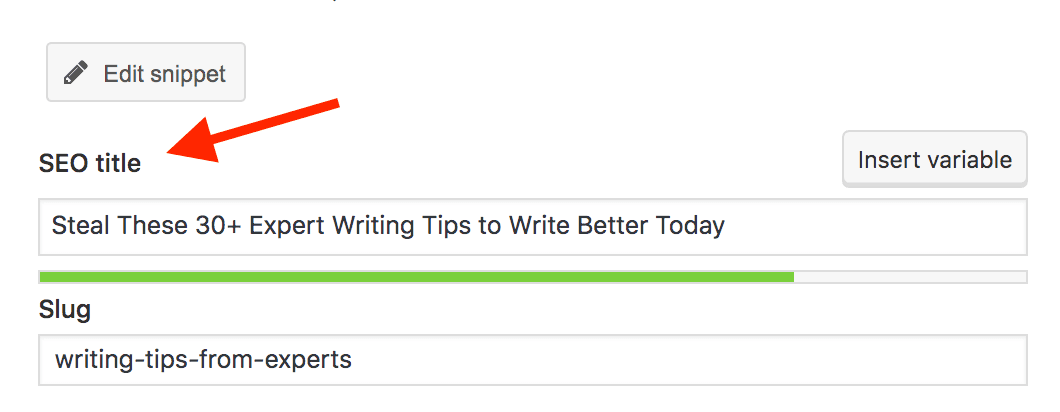
- Write a summary-style, clicks-encouraging meta description
Again, adding your keyword here implies you’re on topic and have the answer to the search query.
But a keyword-focused meta description’s role has less to do with signaling Google you deserve the first place and more to do with encouraging searchers to click your content. This impact on the click-through rate is an important ranking factor.
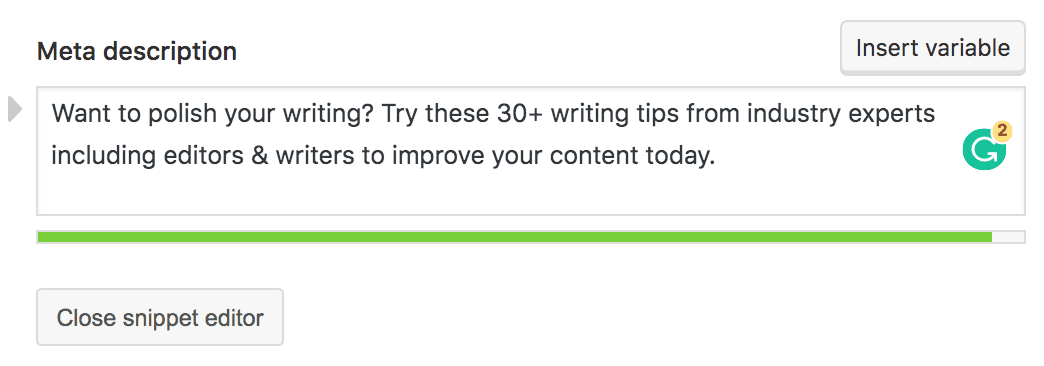
4. Includes a Well-Written Headline
A good headline not just prompts people to read but it also sets their expectations. This headline “How to Create an Effective Blog Content Strategy in Six Steps,” for example, implies you can learn creating a blog content strategy in six steps only.
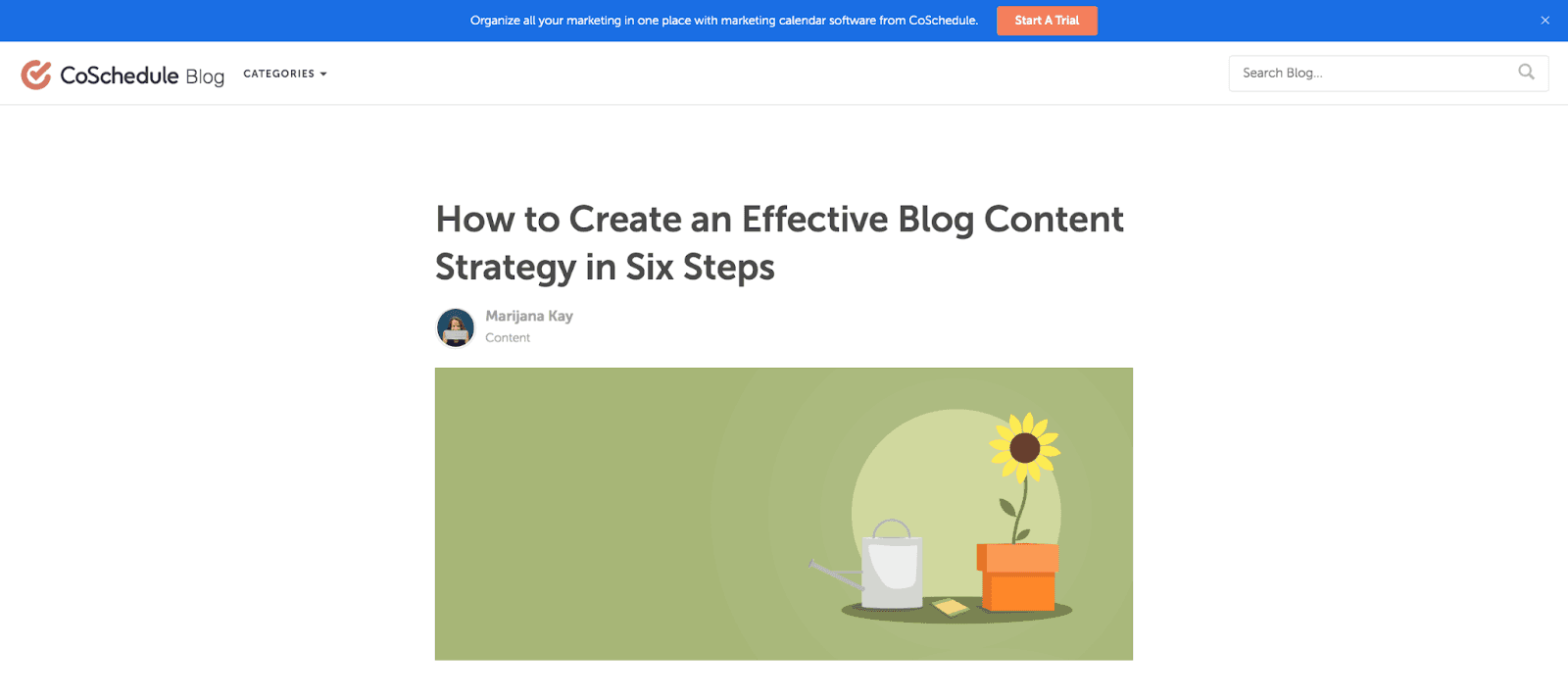 Source
Source
So besides the keyword, what else makes an effective headline? We’ve already got a ton of resources on that including these
101 headline templates and a 3-step process to help you
write catchy headlines.
For now, here’s what makes a
good, SEO-friendly headline:
- Clarity and brevity. To this end, use simple language, avoid big words, and keep it short – no more than 60 characters.
- Consistency with the rest of the content. Provide what you’ve promised in the heading without misleading Google or readers with clickbait headlines.
- Power words and action verbs. These are trigger words that evoke emotions and responses. Slipping them into your headline naturally nudges visitors to read.

Here’s a list of power words you can explore today:

While you need to focus on clarity and simplicity above all, it helps to add some personality to your headline too.
Take this Copyblogger headline, for instance:
 Source
Source
Doesn’t it do a fabulous job at getting readers to read?
For you to write such captivating headlines, make sure you know your audience well so you can touch on an aspect that resonates with them.
That said, writing such effective headlines doesn’t happen on the first try. You need to write at least 10-15 rough headlines to get a striking, SEO-friendly one.
With each heading, ask yourself: can a 10-year-old understand what my headline is saying? This makes sure you aren’t trying anything overly clear that might backfire.
Want a pro tip to write winning headlines? Chuck all your headlines in
CoSchedule’s Headline Analyzer to find out their ranking potential and get actionable suggestions to improve.
Simply type in your headline and hit
Analyze:

Now see how well your headline scores from 100 and get a plateful of useful suggestions on brushing up your headline’s word choice, readability, and character count.
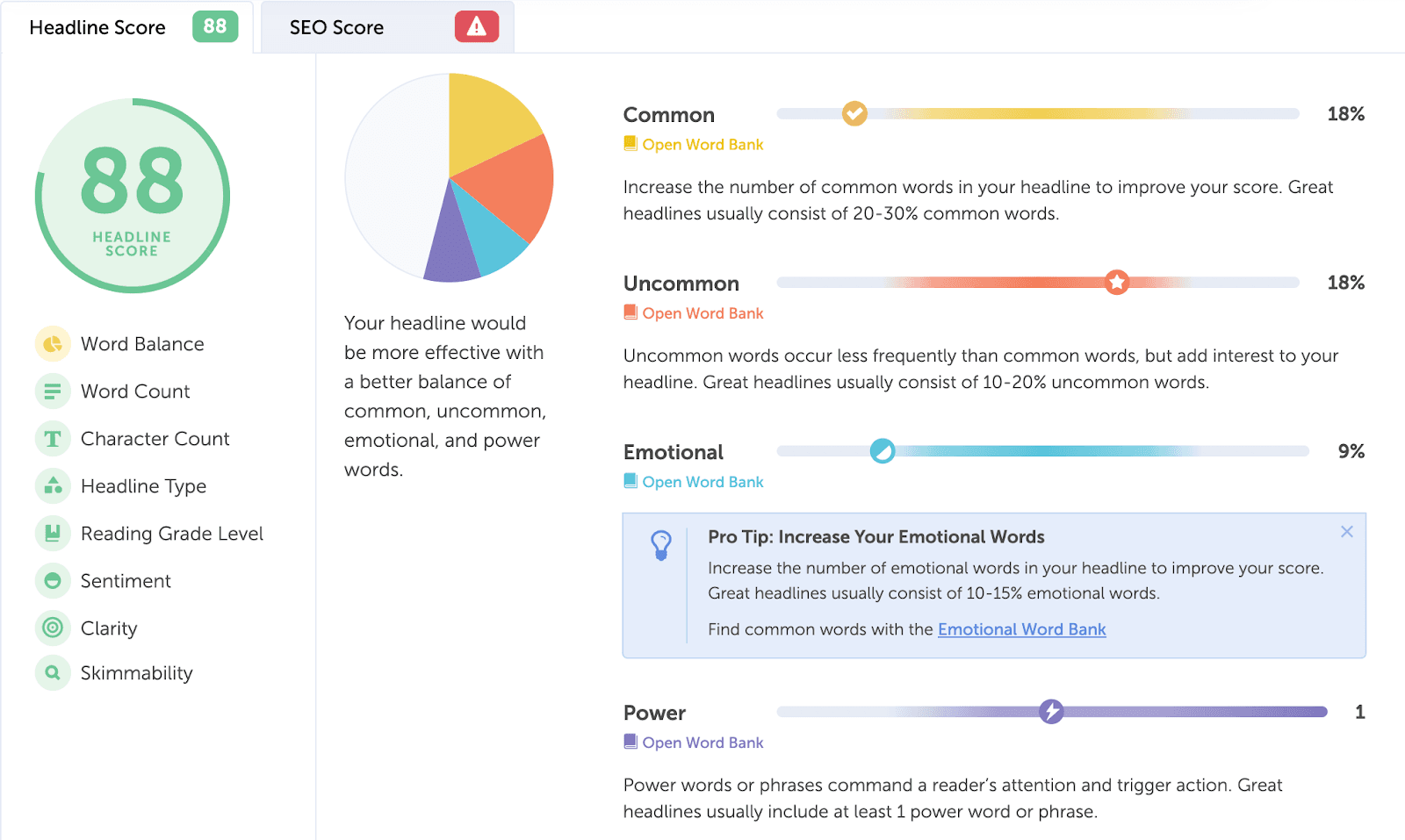
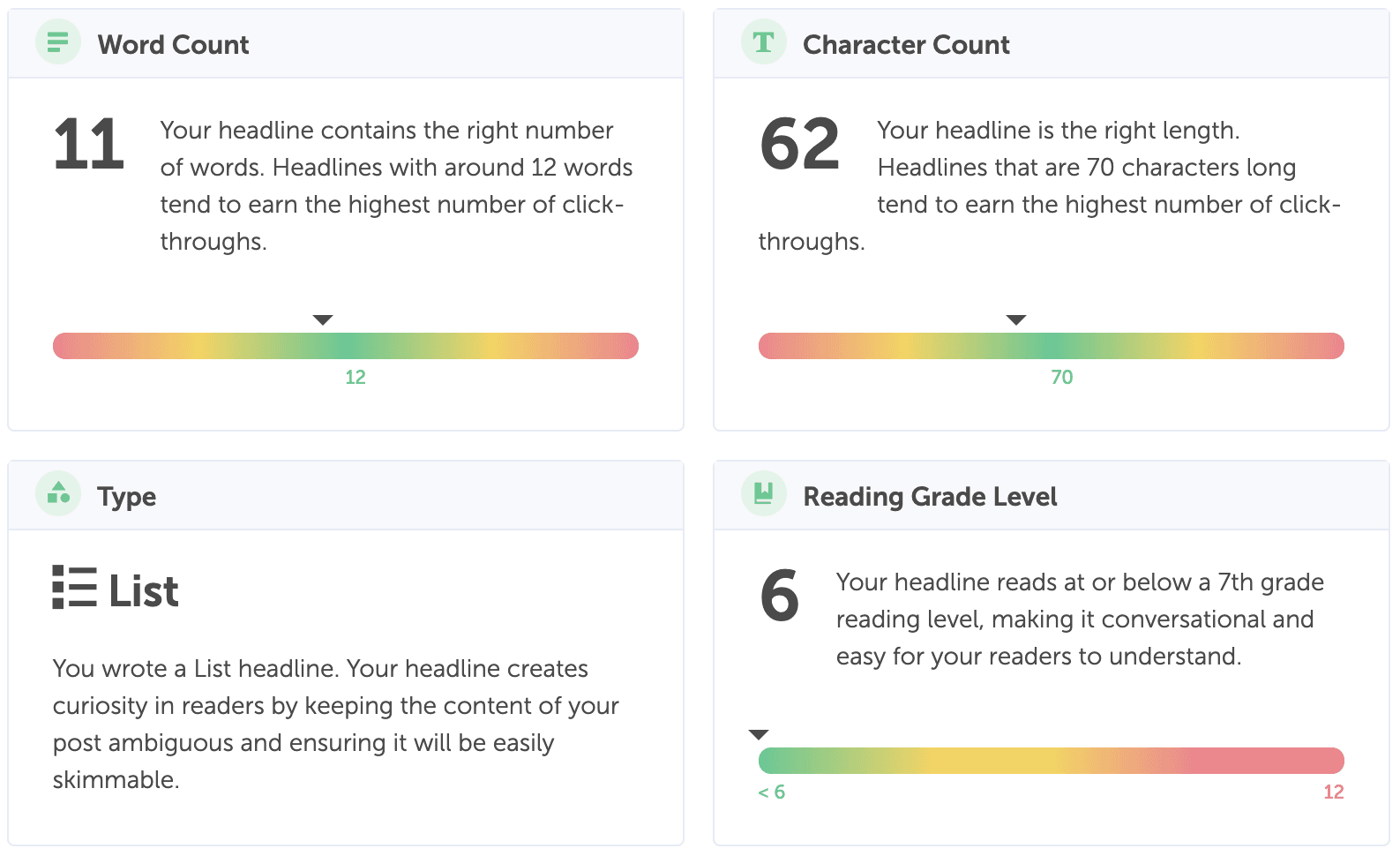
5. Includes Enough Copy to Comprehensively Cover Your Topic
Posts with higher word counts rank better. An
analysis of 11.8 million Google search results, for example, proves that the average first page results have 1,447 words.
But here’s something you need to be crystal clear on: a higher word count doesn’t correlate with better ranking. It’s in-depth, comprehensive content that does.
Interestingly, as you attempt to thoroughly answer your readers’ questions on a topic, you’ll find that the word count naturally hits 1,500 words or more.
But it’s important to distinguish between chasing a certain word count that can help you rank better and creating comprehensive content that helps readers. Why? Because it determines the quality of the content you create.
Such quality, long-form content also picks up more backlinks, which further improves your odds of ranking better – more on this in a bit.
6. Includes Table of Contents for Pieces Longer than 1,500 Words
As part of your content optimization, it’s also essential you work out a table of contents for
long-form content.
This table helps improve readers’ content experience by making it easy for them to navigate to sections.
In terms of search engine optimization, a clickable table of contents helps improve the user experience that Google prioritizes. Plus, it can help you create jump links in the SERPs.
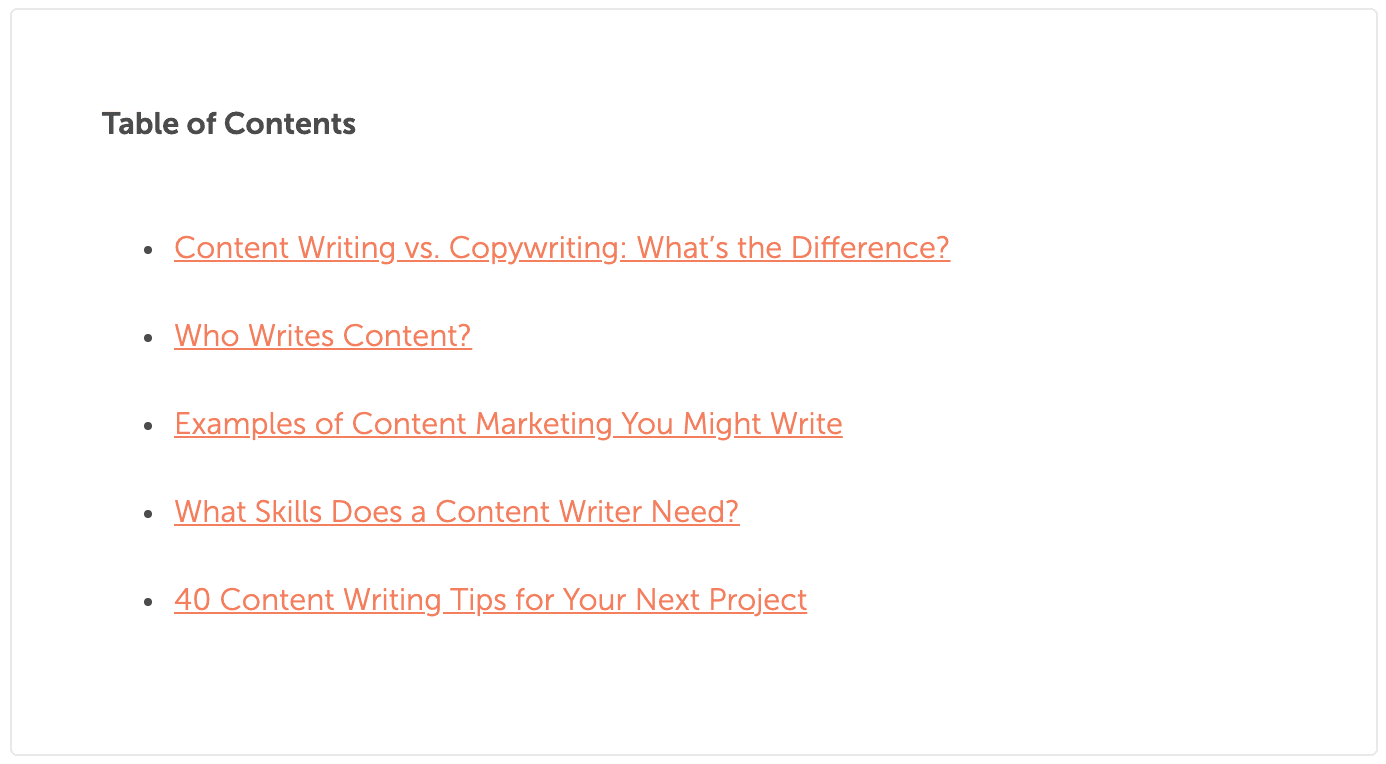
7. Includes a Unique Angle and Strong Introduction
A
good introduction is a welcoming invite that helps:
- Engage readers right off the bat with a strong hook
- Introduce the topic whether with a story or a hot take
- Gear people to read more by sharing what the post covers
Again, for writing such an attention-grabbing introduction, start with revisiting who your audience is. Your introduction, even the hook, will do little to entice readers if it doesn’t tell a story or ask a question that’s relevant to them.
For example, if you’re aiming to use the PAS (problem, agitate, solution) formula in your introduction, it’ll only work its magic if you know your readers’ pain point. Otherwise, it’ll just fall flat.
Here are a few introduction starters to inspire you:
- Start with an expert’s quote.
- Invoke mental imagery with anecdotes.
- Make them laugh. Tell a joke but make sure it’s not offensive.
- Ask readers a relatable question that they find themselves nodding at.
- Tell a story using writing devices like metaphors, analogies, and similes. Surprise readers with a mind-blowing (fresh) statistic or research finding.
8. Includes Quality Images
Images break the monotony of text, making content more reader-friendly.
What’s more, an image’s file name, alt text, caption, and description – all
send essential relevancy signals to the search engine.
But here’s the thing: don’t just add images (particularly, overused stock photos) for the sake of it. Those do little to aid understanding, visualize data, or supplement a message.
To make the most of this website content optimization tactic, design visually engaging, branded images.

The following tips help to this end:
- Use your brand fonts and colors in the images. This promotes image consistency and brand recognition.
- Add enough white space so the design is breathable – not cluttered and repelling to look at.
- Size images correctly based on the publication platform. Social media image sizes, for example, are different sizes than blog post graphics.
Plus, as you add these images, follow this mini-checklist:
- Add relevant file names and alt text to all images.
- Make sure all images are contextually relevant.
- Add an image source to charts or graphics that are externally sourced.
- Properly space images in your content so they’re at least a few paragraphs between graphics.
9. Includes Internal Links to Other Content on Your Site
Adding internal links to your content is another way to improve content experience. After all, they offer readers more resources to grow their knowledge on the same topic.
From an SEO perspective too, internal linking helps by increasing the time people spend on your site. Moreover, it helps pass a published link’s authority (technically known as link equity) to your content.
Search engine crawlers that index and rank content also
find internal links invaluable for understanding and indexing new content.
As you add internal links, you’ll need to be mindful of three things:
- Make sure all internal links are relevant to the topic.
- Link only to authoritative posts on your site to improve ranking.
- Don’t flood your post with internal links as that only comes across as pushy.
One last thing: Be sure to add relevant anchor text. And while you’re at it, keep the anchor text succinct (aim for 4-5 words).
10. Includes External Links to Reputable Third-Party Sources
External links indicate you’ve done your research and are value-focused.
Keep in mind though, only high-authority (and high ranking),
relevant external links tend to boost your SEO game.
As with internal links, make sure all external links are added using succinct and topic-relevant anchor text.
11. Includes Video
This is highly optional but super-useful if you’re serious about ranking higher. The reason? Video has proven to keep readers longer on your page, boosting your dwell time.
It’s also video content that
gets the most shares. Meaning: having a video on your page increases the chances of readers sharing it.
To retain visitors’ attention though, create short videos that cut straight to the matter at hand. Remember: nothing makes viewers stop watching faster than a long video that doesn’t get to the point.
Don’t have a dedicated video host such as a YouTube channel but are ready to leverage video for content optimization? Create short videos using Loom and embed them on your site.
12. Includes Assets to Make Content Easy to Share and Promote
Finally, review content to ensure it’s easy to share and distribute.
By creating in-depth content that’s over 1,500 words long, you’ve already grown your chances of picking up backlinks. Hard to believe?
HubSpot’s study confirms articles with a 2,500+ word count attract the most links.
Another
study of 912 million blog posts too learned the same: long-form gets 77.2% more links than short articles on average.
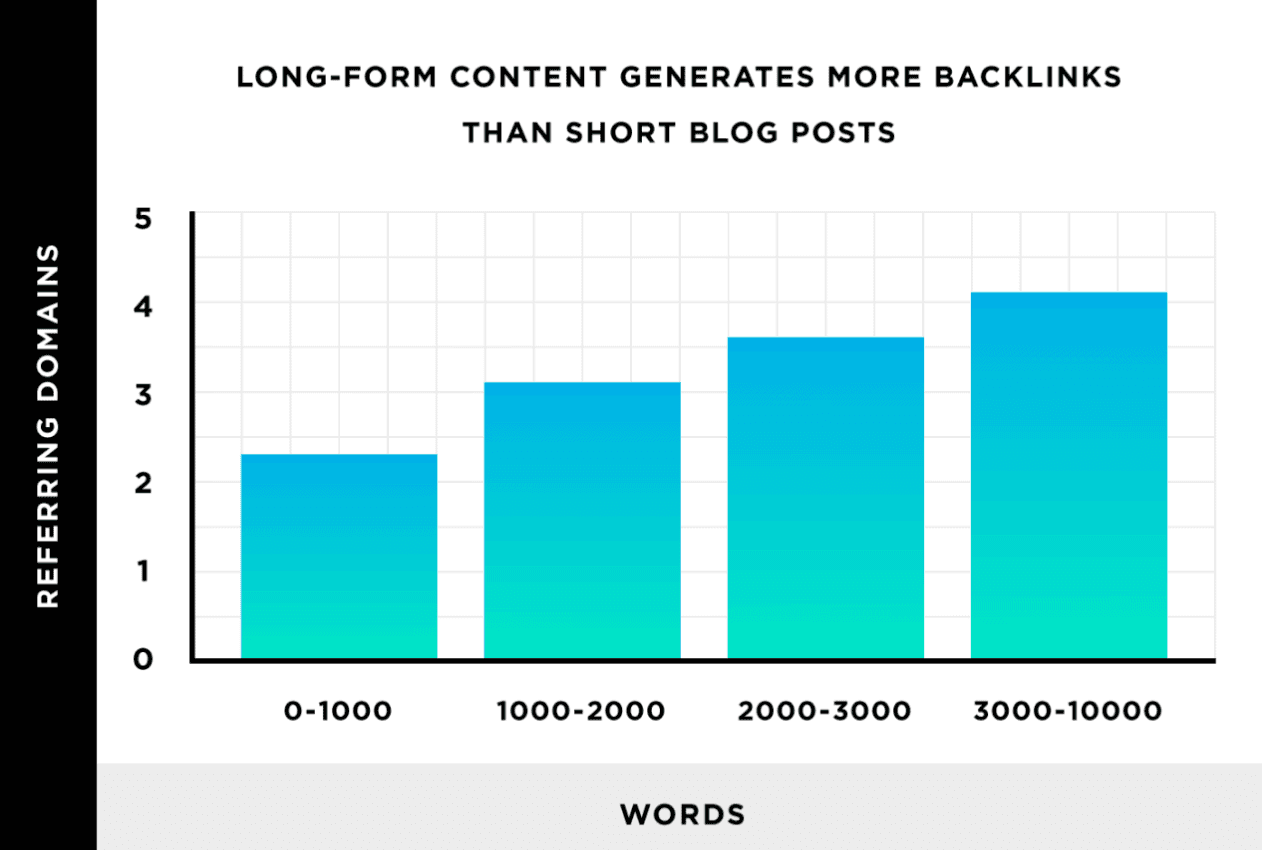 Source
Source
Want to add to your content’s shareability? These three tips help:
- Add click to tweet boxes to make content super-easy to share on social media. With the right click to tweet plugin, it’s simple to add these call-out boxes.
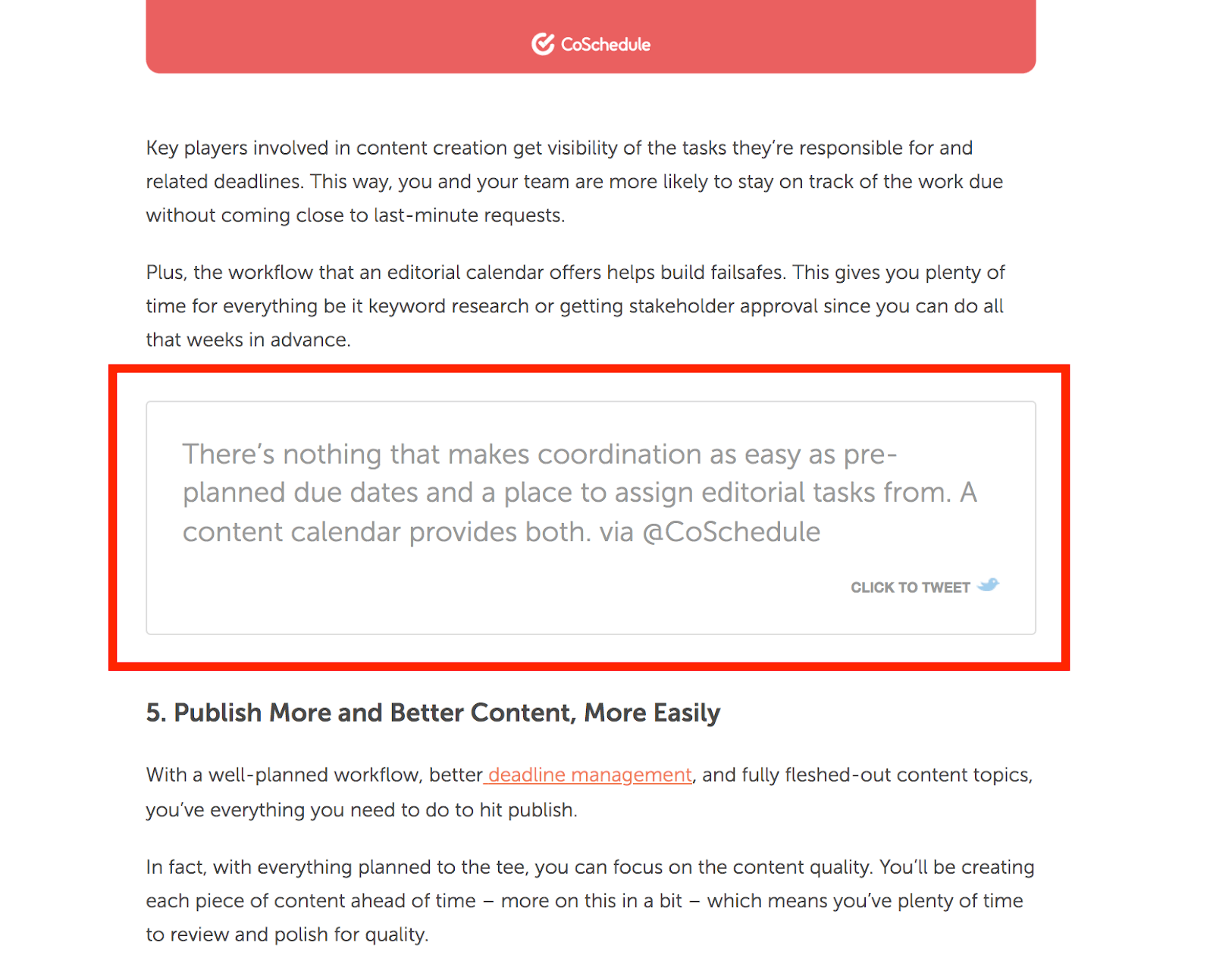 Source
Source
- Include enticing visuals such as images, infographics, and videos that people would want to share.
- Add original research, fresh statistics, and lessons you’ve learned first-hand to your content. All three give people compelling reasons to link to and share your content.
Measuring Results
Checked off all the pointers on this content optimization list? Pat yourself on the back – even reward yourself with a pizza break. ?
Your job, however, doesn’t stop here. You’ll need to track progress by keeping an eye on the following:
- Keyword rankings. Use your SEO tool, say Ahrefs or SEMrush to check how well your content is ranking both before content optimization and after it.
- Impressions. Use Google Search Console to identify how many times your content appears in the search results and how these impressions change before and after optimizing content.
- Clicks. Again, use Search Console to find out how many people are clicking on your content.
- Traffic. Use Google Analytics to track how many people reach your site via the search engine using which keywords. Google Analytics can also tell you the time these folks are spending on your site.
- Conversions. Use Google Analytics to see what site visitors are doing on your site. Are they clicking your CTA and taking the action you want them to? Are they reading more of your content pieces?
Advanced tip: Track performance changes over time as you optimize content – updating, even rewriting, to keep it fresh and relevant (remember:
Google loves fresh content) Use
SEOTesting.com to maintain a log of all the SEO optimization and track changes with each content optimization round.
Rank Better Today
And that’s a wrap. Here’s all of it in one, simple takeaway: content optimization boils down to providing the most value to your readers – it’s as simple as that.
 Apply the task template to all content pieces – you have the choice to apply the checklist before publishing and post-publishing (best if you’ve only started looking at content optimization)
Apply the task template to all content pieces – you have the choice to apply the checklist before publishing and post-publishing (best if you’ve only started looking at content optimization)
 Working on website content optimization with the rest of the team? Assign tasks from the checklist template to different teammates alongside due dates.
Working on website content optimization with the rest of the team? Assign tasks from the checklist template to different teammates alongside due dates.
 Create your free account to start creating task-based checklists with Marketing Calendar Free. Then when you’re ready to upgrade, enjoy Task Templates with Marketing Calendar Pro.
Create your free account to start creating task-based checklists with Marketing Calendar Free. Then when you’re ready to upgrade, enjoy Task Templates with Marketing Calendar Pro.
 That said, it’s important you don’t go overboard here.
So when you review content, put yourself in your readers’ shoes and ask yourself: is the keyword popping up so often that it’s annoying? If so, remove it from a few places.
That said, it’s important you don’t go overboard here.
So when you review content, put yourself in your readers’ shoes and ask yourself: is the keyword popping up so often that it’s annoying? If so, remove it from a few places.


 Source
So besides the keyword, what else makes an effective headline? We’ve already got a ton of resources on that including these 101 headline templates and a 3-step process to help you write catchy headlines.
For now, here’s what makes a good, SEO-friendly headline:
Source
So besides the keyword, what else makes an effective headline? We’ve already got a ton of resources on that including these 101 headline templates and a 3-step process to help you write catchy headlines.
For now, here’s what makes a good, SEO-friendly headline:
 Here’s a list of power words you can explore today:
Here’s a list of power words you can explore today:

 Source
Doesn’t it do a fabulous job at getting readers to read?
For you to write such captivating headlines, make sure you know your audience well so you can touch on an aspect that resonates with them.
That said, writing such effective headlines doesn’t happen on the first try. You need to write at least 10-15 rough headlines to get a striking, SEO-friendly one.
With each heading, ask yourself: can a 10-year-old understand what my headline is saying? This makes sure you aren’t trying anything overly clear that might backfire.
Want a pro tip to write winning headlines? Chuck all your headlines in CoSchedule’s Headline Analyzer to find out their ranking potential and get actionable suggestions to improve.
Simply type in your headline and hit Analyze:
Source
Doesn’t it do a fabulous job at getting readers to read?
For you to write such captivating headlines, make sure you know your audience well so you can touch on an aspect that resonates with them.
That said, writing such effective headlines doesn’t happen on the first try. You need to write at least 10-15 rough headlines to get a striking, SEO-friendly one.
With each heading, ask yourself: can a 10-year-old understand what my headline is saying? This makes sure you aren’t trying anything overly clear that might backfire.
Want a pro tip to write winning headlines? Chuck all your headlines in CoSchedule’s Headline Analyzer to find out their ranking potential and get actionable suggestions to improve.
Simply type in your headline and hit Analyze:
 Now see how well your headline scores from 100 and get a plateful of useful suggestions on brushing up your headline’s word choice, readability, and character count.
Now see how well your headline scores from 100 and get a plateful of useful suggestions on brushing up your headline’s word choice, readability, and character count.



 The following tips help to this end:
The following tips help to this end:
 Source
Want to add to your content’s shareability? These three tips help:
Source
Want to add to your content’s shareability? These three tips help:
 Source
Source


